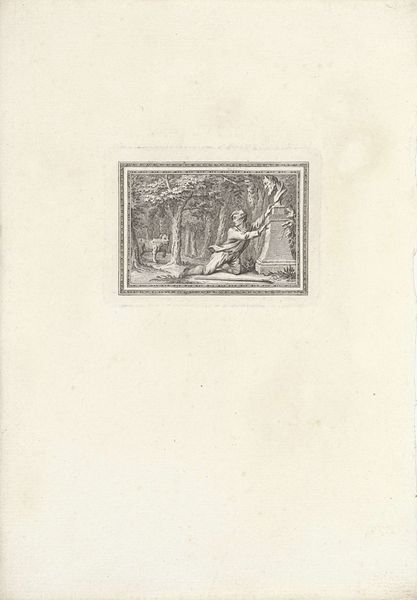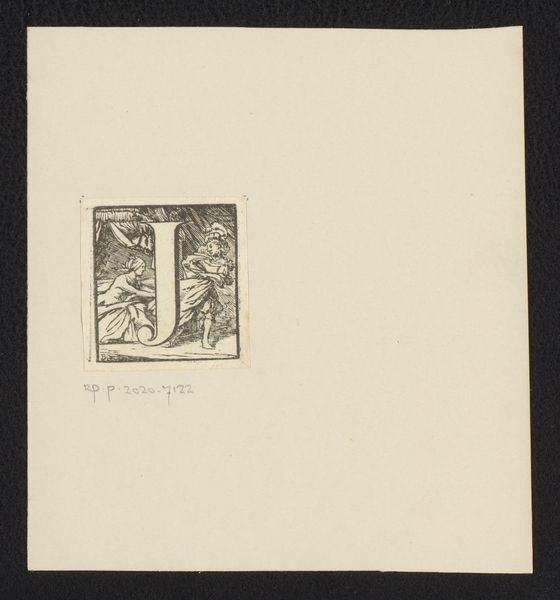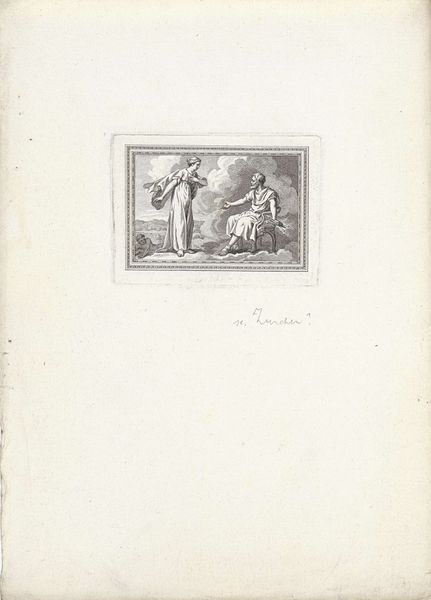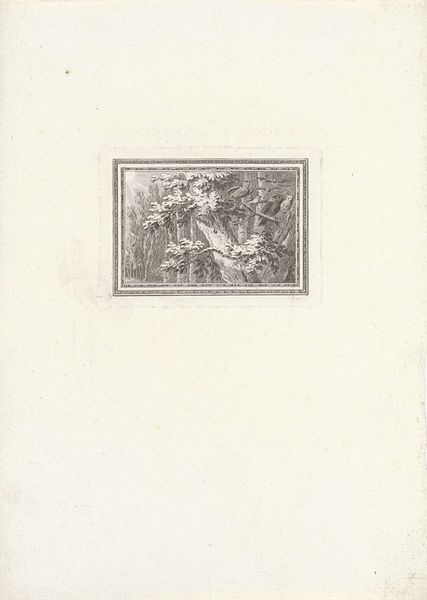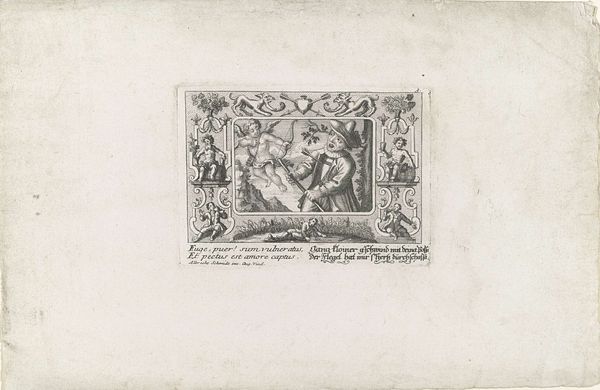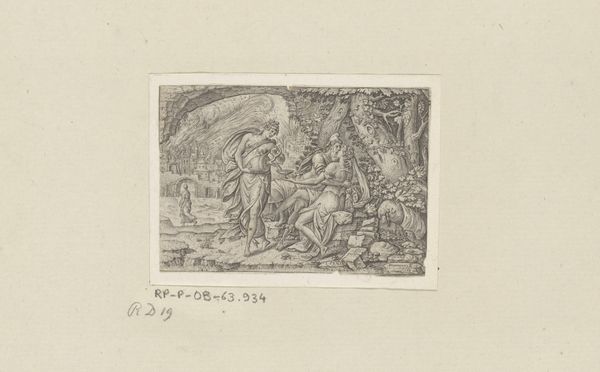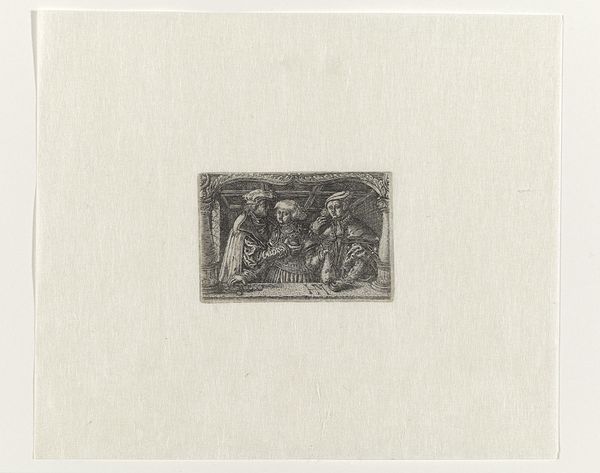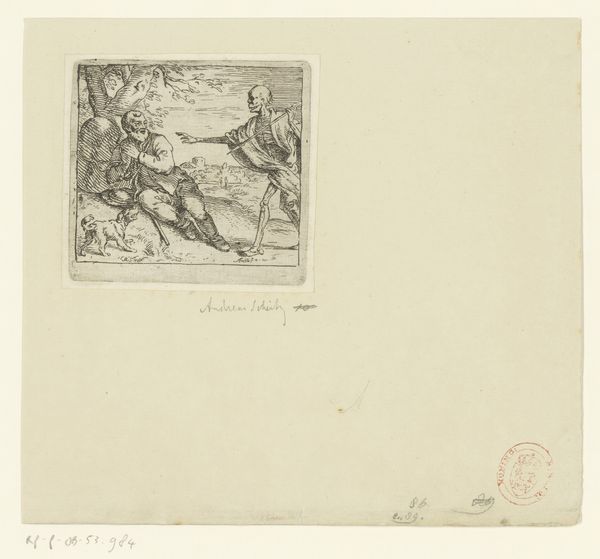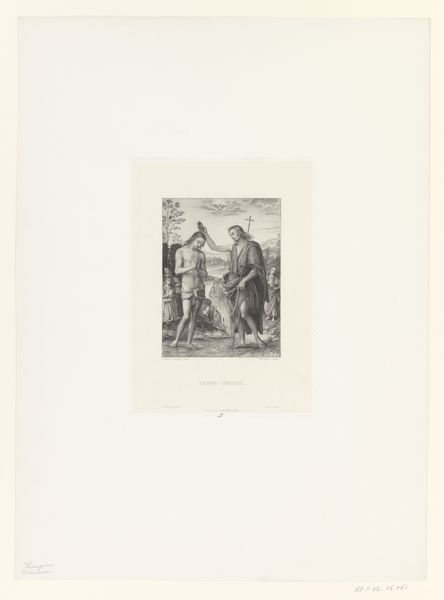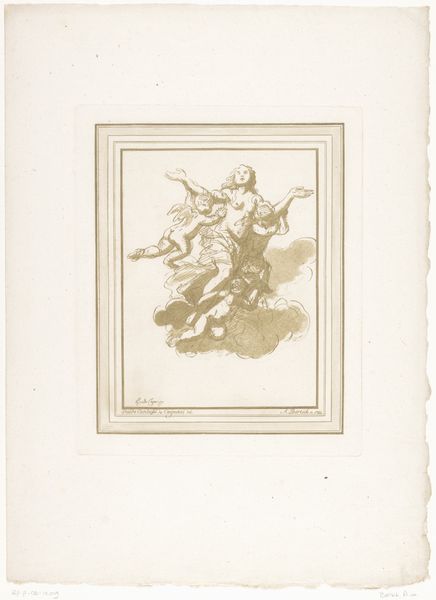
engraving
#
old engraving style
#
mannerism
#
history-painting
#
nude
#
engraving
Dimensions: height 51 mm, width 40 mm
Copyright: Rijks Museum: Open Domain
Curator: Welcome. We're standing before Etienne Delaune's engraving, "Death of Lucretia," created in 1569. This print is currently held here at the Rijksmuseum. Editor: Immediately, the drama jumps out. The figure of Lucretia dominates, of course, but her pose speaks volumes – a sort of collapsed elegance. I'm curious about the engraving process and how it lends itself to capturing such emotional weight. Curator: The choice of engraving, in this period, allowed for meticulous detail. Delaune skillfully employs the technique to present a rather politically charged depiction of the legendary Lucretia. The Mannerist style heightens the drama. Consider, though, what it means to depict a woman's death after sexual assault and position that trauma as the catalyst for the expulsion of kings. The inscription supports this argument. Editor: Absolutely, it's fascinating how the medium informs the message. Engraving, with its inherent laboriousness, transforms this act into something tangible, almost consumable. The stark contrast of light and shadow further emphasizes the brutal reality. The figures surrounding Lucretia—who are they and what is their part? Curator: Tradition presents them as witnesses, mainly male, observing the tragedy that befalls Lucretia after her assault by Tarquin. But through a contemporary lens, we might question the politics inherent in showcasing a woman's body only in death and its service as a nation's political turning point. Editor: And what about her hand on the dagger, so suggestive of both agency and ultimate lack thereof? It speaks to the fraught relationship women have had with tools of creation as well as destruction through history. I can almost feel the coolness of the metal. Curator: Indeed. Her hand gripping the weapon makes the print's interpretation open to different, at times conflicting, understandings of her actions. In some respects, she is at the epicenter of the power she sought to reclaim. Editor: This piece is a compelling testament to how social narratives become intricately interwoven with artistic methods, making us rethink conventional views on this art. Curator: This print prompts important dialogues about history and making, compelling viewers to assess history, its representation, and artmaking.
Comments
No comments
Be the first to comment and join the conversation on the ultimate creative platform.
